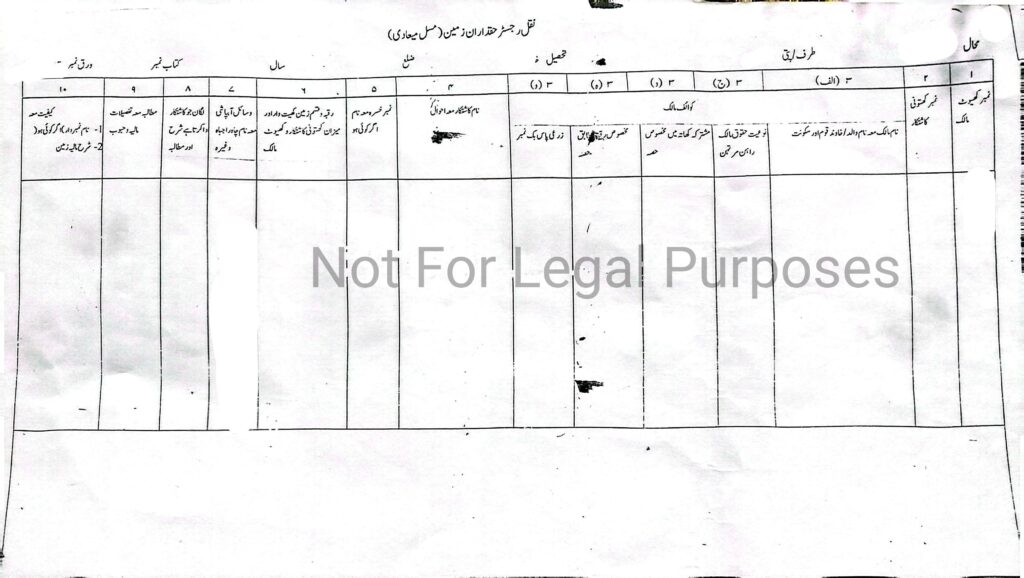In a country where agriculture forms the backbone of the economy, effective land management is of paramount importance.
Amidst this, the Patwari stands as a pivotal figure, bridging the gap between landowners and the state apparatus. From remote rural landscapes to urbanized settlements, the Patwari remains an integral part of Pakistan’s administrative machinery.
Historical Background of the Patwari System
The roots of the Patwari system trace back to the Mughal Empire, where meticulous record-keeping was prioritized for taxation and governance.
This system was later refined during British colonial rule, embedding itself deeply into the administrative structure. Post-independence, Pakistan inherited this legacy, which continues to play a crucial role in land revenue and management.
Definition of a Patwari
The term “Patwari” originates from the Persian language, broadly referring to a person responsible for land records. In contemporary terms, a Patwari is an official who manages the intricate details of land ownership, revenue, and distribution at the grassroots level.
Their duties extend beyond mere documentation, encompassing roles in dispute resolution and community interaction. A Patwari is also known as revenue field staff.
Primary Duties of a Patwari
The Patwari holds a central role in the maintenance of land records, which forms the backbone of Pakistan’s agrarian economy.
- These records, known as “Jamabandi” or “Khasra Girdawari,” meticulously detail land ownership, boundaries, crop patterns, and tenancy arrangements.

- The accuracy and timely updating of these records are critical, as they are often relied upon for resolving disputes, issuing loans, and granting permissions for developmental projects.
- Beyond record-keeping, Patwaris are integral to the revenue collection process. They assess and record land taxes, known locally as “Malguzari,” ensuring the smooth inflow of funds into the government’s coffers. This task requires not only an understanding of land valuation but also a keen eye for accuracy, as discrepancies can lead to financial disputes or accusations of malpractice.
- Conducting land surveys is another vital responsibility.
- Whether for government infrastructure projects, legal cases, or private land sales, Patwaris measure and demarcate land parcels with precision.
- Their role in surveys often serves as the groundwork for significant developmental initiatives such as road construction, irrigation systems, and industrial zones.
- This aspect of their job frequently places them in the midst of critical administrative and developmental activities.
Administrative Functions
The Patwari’s administrative duties extend far beyond their local jurisdiction, as they serve as the first point of contact in the bureaucratic chain related to land affairs.
Coordination with Tehsildars
They work in close coordination with Tehsildars, who oversee revenue administration at the sub-district level, and Naib Tehsildars, their immediate superiors. This collaboration is essential to ensure the implementation of land-related policies, including those pertaining to taxation, inheritance, and redistribution.
Land Dispute Resolution
One of the most nuanced aspects of their administrative role is their involvement in land dispute resolution. Disputes over property boundaries, ownership claims, or tenancy agreements often escalate to local courts or administrative hearings. In these cases, the Patwari’s records, maps, and insights serve as critical evidence. Their impartiality and detailed documentation can make the difference between a swift resolution and prolonged litigation.

Intermediaries between Landowners and the Government
Moreover, Patwaris act as intermediaries between landowners and the government. They facilitate communication and ensure that grievances, applications, and land-use requests reach the appropriate authorities. This role demands strong interpersonal skills and a deep understanding of legal and administrative frameworks, as they must balance the interests of individuals with the broader objectives of governance.
Local Governance
Their involvement in local governance also extends to public awareness campaigns. Patwaris often educate farmers and landowners about changes in policies, such as new taxes, subsidies, or land-use regulations, ensuring that communities are informed and compliant with the law.
In essence, the Patwari operates as a linchpin in Pakistan’s land administration system, navigating a complex web of responsibilities that blend technical expertise, administrative acumen, and community engagement.
Challenges Faced by Patwaris
The role of a Patwari is not without its challenges.
- Overburdened by extensive workloads and limited resources, they often struggle to meet the demands of their responsibilities.
- Allegations of corruption and inefficiency further tarnish the perception of their role, leading to calls for systemic reforms.
Impact of Technology on the Patwari System
The advent of digital land record systems has brought both opportunities and challenges for Patwaris.
While the digitization of records aims to reduce errors and enhance transparency, adapting to these new technologies has proven difficult for many. Training and infrastructure deficiencies further complicate this transition.
Future Prospects and Reforms
The future of the Patwari system lies in its modernization. Advocates for reform emphasize the need for transparent processes, better training, and equitable resource allocation.
By addressing these issues, the Patwari’s role can be revitalized, ensuring its relevance in a rapidly evolving administrative landscape.
Conclusion
The Patwari system, despite its challenges, remains an indispensable part of Pakistan’s governance. Its historical legacy and continuing relevance underscore the need for thoughtful reforms that honor its role while adapting it to modern requirements.
By doing so, Pakistan can ensure effective land management and equitable access to resources for all.



Leave a Reply